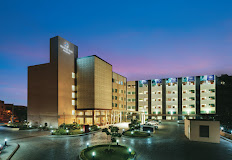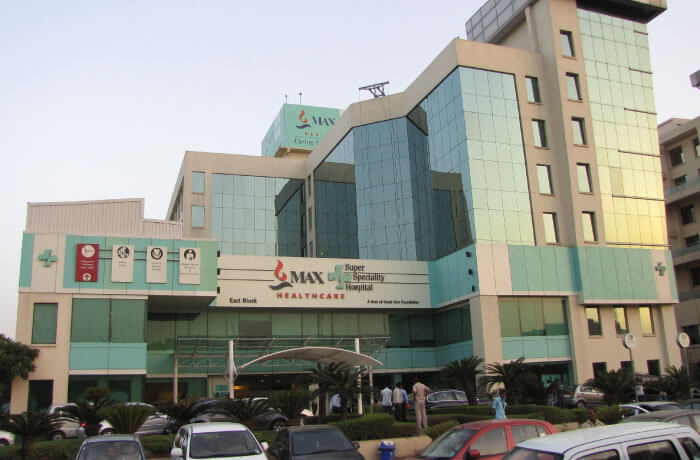General Surgery
Debridement
Debridement
Debridement Treatment in India offers advanced wound care solutions using modern techniques to remove dead tissue, prevent infection, and promote faster healing at affordable costs.
Debridement procedure for wound healing
Debridement can be defined as the medical process of removing dead, damaged, or infected tissue off a wound to facilitate quicker and more efficient healing. It has the advantage of eliminating non-viable tissue thereby preventing infection, enabling healthy tissue to develop and providing better evaluation of wounds.
Debridement Indications
Debridement is generally suggested in wounds with:
- Necrotic or dead tissue
- Slough (yellow, soft tissue)
- Infected wounds
- Chronic wounds (e.g. diabetic foot ulcers, pressure ulcers)
- Burns or traumatic injuries
- Delayed healing surgical wounds.
Types of Debridement
Surgical (Sharp) Debridement
- Technique: scalpels, scissors or curettes used to scrape away dead tissue.
- Identification: Extensive necrosis or tissue infection; there is a high demand to remove it promptly.
- Pros: Quick, effective.
- Cons: Suffering; chances of bleeding; needs expertise clinician.
Mechanical Debridement
-
Procedure: Any of the following, physical removal involving wet-to-dry dressings, irrigating the wound with water, or hydrotherapy.
- Pros: Non-invasive, simple.
- Cons: Has the ability to harm normal tissues; is time consuming.
Autolytic Debridement
- Procedure: Breaking down the dead tissue by using body own enzymes and moisture-retaining dressings (e.g., hydrocolloids, hydrogel) to break down dead tissue.
- Advantages: Necrotic tissue selective, painless.
- Disadvantages: slow; not applicable to infected wounds.
Enzymatic Debridement
- Technique: Topical enzymes (e.g., collagenase) put on wound to debride necrotic tissue.
- Advantages: Works on the localized necrotic tissue; can be administered at home.
- Cons: Costly: slower than surgical debridement.
Biological Debridement (Maggot Therapy)
- Technique: The larvae of Lucilia sericata are placed on the wound sterile and they selectively feed on necrotic tissue.
- Advantages: So picky; antibacterial influence.
- Disadvantages: Uncomfort or psychological obstacles in the patient; special supervision is required.
Debridement Procedure (Overall Processes)
- Evaluation: Inspect wounds, size, depth, infection and tissue type.
- Preparation: Clean wound with sterile saline; make sure there is analgesia or local anesthesia where necessary.
Debridement:
- Surgical: remove necrotic tissue using a scalpel/scissor.
- Mechanical: Wet-to-dry dressing or irrigation.
- Autolytic/enzymatic: Use suitable dressing/enzyme.
- Biological: Use sterile maggots.
- Hemostasis: Contain bleeding where it exists.
- Dressing: Wrap wound in appropriate dressing in order to keep it moist and not infected.
- Observation: Infection, healing, re-debridement (as needed) of wound.
Post-Debridement Care
- Keep wound clean and moist.
- Dress changing as directed.
- Watch infection (erythema, edema, pus, odor).
- Eat to heal (protein, vitamins).
- Pain management as needed.
Benefits of Debridement
- Reduces infection risk.
- Enhances quick healing of wounds.
- Improves effectiveness of topical therapy.
- Assistance in adequate wound evaluation.
Surgical debridement for scalp wounds
Purpose
Surgical debridement of the scalp is performed to:
- Debride necrotic, contaminated, or infected tissue.
- Reduce risk of infection
- Enhance rapid healing/re-epithelialization.
- Ready the wound to be closed or grafted, when required.
Indications
- Scalp aviation or lacerations which are traumatic.
- Burns or infection necrosis.
- Prolonged incomplete scalp ulcers.
- Scalp wounds (necrotic post-surgery).
Preparation
Patient Assessment
- Screen bleeding, infection, or comorbidities.
- Assess wound size, depth, tissue viability.
Consent & Analgesia
- Explain procedure and risks.
- Use local anaesthesia or sedation where necessary.
Wound Cleaning
- Sterile saline irrigation.
- Eliminate surface debris and clots.
Sterile Setup
- Wear sterile dressing, sterile gloves, instruments (scalpel, scissors, forceps) and dressing materials.
Procedure Steps
Debride Necrotic Tissue
- Determine unviable tissue: gray, black or sloughy tissue.
- Carefully remove necrosis with scalpel or scissors.
- Do not damage underlying periosteum or scalp tissue.
Control Bleeding
- Use pressure, cautery or suture when necessary.
Irrigation
- Rinse wound with sterile saline to clear the debris.
Inspect Wound
- Only healthy bleeding tissue is to be left.
- Examine exposed bone/infection.
Closure or Dressing
Depending on wound size:
- Abbreviated closure when edges are approximable.
- Large defects covered by skin grafting or flaps.
- Wet dressing of secondary intention healing.
Scalp avulsion wound debridement treatment
A scalp avulsion is a wounds injury in which a portion or entire scalp is violently removed off the skull. Such injuries are very susceptible to infection, massive hemorrhaging, and need emergency care.
Treatment Goals
- Debride necrotic or infected tissue.
- Control bleeding.
- Reduce infection risk.
- Encourage healing of the wound and scalp cover.
- Keep scalp head intact where possible.
Steps of Debridement Treatment
Initial Management
- Stabilize the patient: First deal with airway, breathing and circulation.
- Stop bleeding: Direct pressure; temporary hemostatic agent may be of use.
- Pain control: Use painkillers and, as necessary, tranquilizers.
- Antibiotics: Prevention, IV, broad-spectrum antibiotics.
Wound Cleaning
- Wash wound with a lot of sterile saline to remove dirt and debris.
- Clear the loose hairs, dirt and foreign material.
- Evaluate tissue viability: Living tissue is pink, bloody and elastic; non-living tissue is gray/black, non-bloody or hard.
Surgical Debridement
- Debridement with scalpels or scissors.
- Conserve as much healthy tissue as can be preserved.
- Stop a bleeding with electrocaution or suture.
- Do not cause harm to the periosteum except necrotic.
Wound Coverage
Based on the size of the wound and the scalp:
Primary Reattachment
- Wash the scalp which is avulsed.
- Reopen with sutures, preferably with vascular supply.
Secondary Closure or Grafting
- In the event of massive loss of scalp, split-thickness skin grafts can be applied.
- Over the skull areas that are exposed may be covered with local flaps.
Secondary Intention Healing
- Minor injuries can be given a chance to heal using wet dressings.
Post-Debridement Care
- Dressing: Non-adherent sterile dressing; frequently change.
- Antibiotics: Start IV or oral antibiotics as per instruction, 5-7 days.
- Pain management: Analgesics on demand.
- In case of indicated prophylaxis against tetanus.
- Follow-up: Infection, necrosis, or graft failure.
Factors Affecting Cost of debridement surgery in India
Debridement surgery in India may be very expensive depending on a number of factors. The following are the main factors that have an impact on pricing:
Hospital Type & Location
- Private vs. Government Hospitals: The prices usually are more in the case of private hospitals because of the facilities and individual care.
- Urban vs. Rural Setting Urban hospitals in urban centers such as Delhi, Mumbai, and Gurugram are more expensive than those in rural landscapes.
Procedure Complexity
- Scopes of Debridement: Greater scope of debridement is needed with greater costs with larger or more complicated wounds.
- Additional Procedures: When skin grafts, hyperbaric oxygen therapy or offloading devices are required, the cost may skyrocket in case of diabetic foot ulcers.
Surgeon’s Expertise
- Well trained surgeons or any with special skills might charge more.
Anaesthesia Type
- Local anaesthesia is usually cheaper than general anaesthesia.
Hospital Stay Duration
- Prolonged nursing or monitoring within the hospital or after surgery contributes to the overall expenses.
Diagnostic, Supportive Services
- Expenses of examinations, such as X-rays, MRIs, blood tests, and medications, may add up.
Best hospitals for wound debridement in India
- Artemis Hospital, Gurgaon
- Medanta-The Medicity, Gurgaon
- Fortis Memorial Research Institute, Gurgaon
- Max Hospital, Saket
Conclusion
Debridement is also a crucial process of managing a wound on the scalp, more so in case of a traumatic wound such as scalp avulsion. Surgical debridement involves the removal of necrotic and contaminated tissue, bleeding control and the preparation of the wound to be healed or reconstructed. The procedure helps to avoid infection, ensures faster healing, and saves healthy scalp tissue as much as possible.
Debridement treatment in India GetWellGo
GetWellGo is regarded as a leading supplier of healthcare services. We help our foreign clients choose the best treatment locations that suit their needs both financially and medically.
We offer:
- Complete transparency
- Fair costs.
- 24 hour availability.
- Medical E-visas
- Online consultation from recognized Indian experts.
- Assistance in selecting India's top hospitals for Debridement treatment.
- Expert surgeon with a strong track record of success
- Assistance during and after the course of treatment.
- Language Support
- Travel and Accommodation Services
- Case manager assigned to every patient to provide seamless support in and out of the hospital like appointment booking
- Local SIM Cards
- Currency Exchange
- Arranging Patient’s local food
FAQ
What is the recovery time of scalp debridement?
- Minor wounds: 12 weeks first healing.
- Wounds of large size or grafted ones: 3-6 weeks, including follow-up treatment and monitoring.
What should the patients do to guarantee healing?
- Early and timely debridement
- Wound management and change of dressings.
- Proper nutrition and fluid intake
- Home visits to check infection or complication.
- Treating comorbidities such as diabetes
TREATMENT-RELATED QUESTIONS
GetWellGo will provide you end-to-end guidance and assistance and that will include finding relevant and the best doctors for you in India.
A relationship manager from GetWellGo will be assigned to you who will prepare your case, share with multiple doctors and hospitals and get back to you with a treatment plan, cost of treatment and other useful information. The relationship manager will take care of all details related to your visit and successful return & recovery.
Yes, if you wish GetWellGo can assist you in getting your appointments fixed with multiple doctors and hospitals, which will assist you in getting the second opinion and will help you in cost comparison as well.
Yes, our professional medical team will help you in getting the estimated cost for the treatment. The cost as you may be aware depends on the medical condition, the choice of treatment, the type of room opted for etc. All your medical history and essential treatment details would be analyzed by the team of experts in the hospitals. They will also provide you with the various types of rooms/accommodation packages available and you have to make the selection. Charges are likely to vary by the type of room you take.
You have to check with your health insurance provider for the details.
The price that you get from GetWellGo is directly from the hospital, it is also discounted and lowest possible in most cases. We help you in getting the best price possible.
No, we don't charge patients for any service or convenience fee. All healthcare services GetWellGo provide are free of cost.
Top Doctors for General Surgery
Top Hospitals for General Surgery
Contact Us Now!
Fill the form below to get in touch with our experts.







